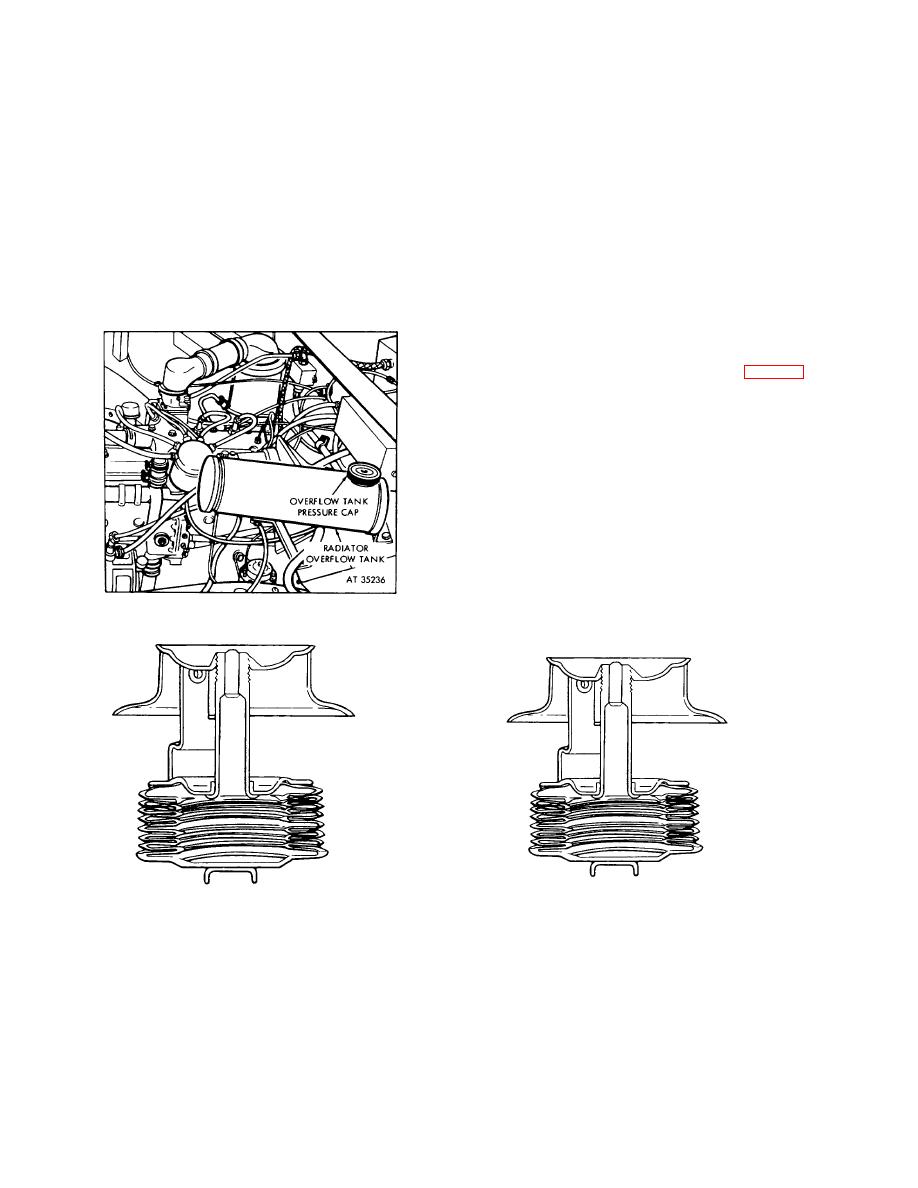 |
|||
|
|
|||
|
|
|||
| ||||||||||
|
|
 the tank to operate properly. Most tanks are equipped with
1-12.
Thermostat
an overflow pipe and drain cock.
a. General. Full-length engine water jackets, large
c. Operation. Either expansion of the coolant when
efficient radiator cores, and rapid coolant circulation in the
it is heated or steam pressure due to boiling will force
system provide the extra cooling required for engine
coolant into the overflow tank. Boiling may occur during
operation under heavy load in hot weather. However,
operation, but it happens more often after the engine is
under lighter engine load in cool weather, the same
stopped. When the engine cools down, pressure in the
amount of cooling would remove too much heat from the
system drops below the pressure of air outside and any
engine. Therefore, the amount of heat removed from the
coolant held in the overflow tank is forced back into the
engine must be controlled for different operating conditions
radiator. The overflow tank prevents loss of coolant from
and air temperatures. This is done by the thermostat
boiling during periods of severe vehicle operation.
which regulates engine temperature by automatically
However, if the overflow from the radiator is so great that
controlling the amount of coolant flowing through the
the tank is filled, coolant will be lost through the tank
radiator core.
overflow.
b.
Construction
(1) Bellows-type The thermostat (fig. 1-7) consists
of a valve and a heat-operated unit which moves the valve.
This type of thermostat-operating unit contains a special
liquid designed to boil at a certain temperature. When that
temperature Is reached, the boiling liquid creates gas
pressure which expands the bellows and opens the
thermostat valve. When the liquid cools and condenses,
pressure is reduced, allowing the bellows to contract and
close the valve.
(2) Coil spring-Type In this type of thermostat (fig 1-
8), the valve is operated by a bimetallic coil which depends
for its operation upon the difference of coefficients of
expansion of the two metals. The coil expands and opens
the valve when heated above a certain temperature. As
Figure 1-6. Radiator overflow tank.
the coil cools down, it contracts and closes the valve
CLOSED
Figure 1-7. Bellows-type thermostat - cutaway view.
1-6
|
|
Privacy Statement - Press Release - Copyright Information. - Contact Us |